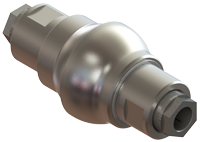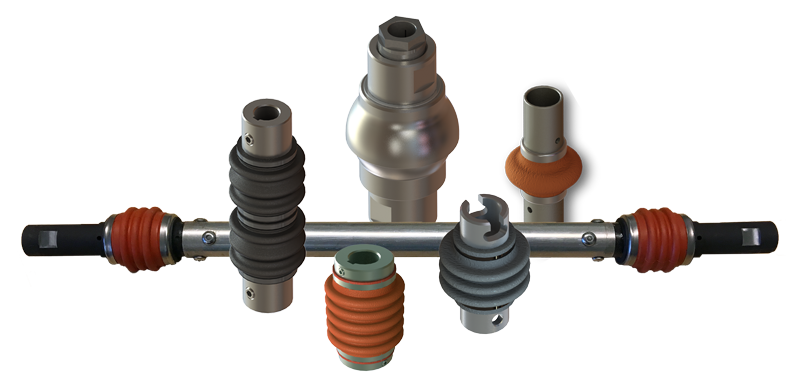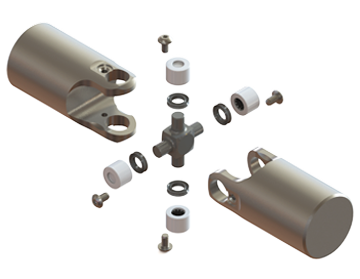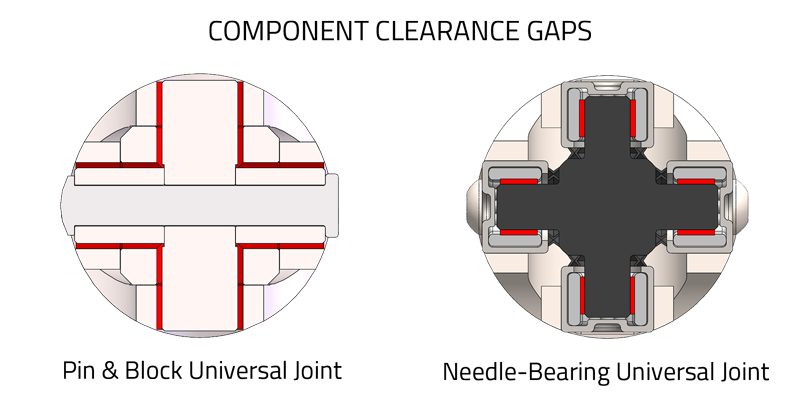Custom Solutions Address Common Universal Joint Failure Problems
A common frustration we hear from equipment users turning to us for assistance is that their universal joints don’t hold up as expected. Low quality or poorly designed universal joints can result in loss of usefulness, partial machine malfunction, or complete universal joint failure. Below are some common bad u joint symptoms production and maintenance associates might encounter:
Corrosion
A common universal joint problem is when corrosion occurs. Depending on the level of humidity in the environment, components can erode over time, even without exposure to harsh substances.
Solution: Stainless Steel Universal Joints
Various grades of stainless steel joints can deliver moderate to extreme corrosion resistance. When selecting the appropriate grade, factors such as welding, machinability and strength must be taken into consideration.

Belden works with a wide variety of stainless steel grades
Mechanical Wear
Contamination of the joint components by debris is a frequent cause of mechanical wear. Dust can be trapped between the moving parts and create grooves on the surface over time.
Solution: Protective boot covers and lubrication
Lubrication of the joint can reduce component wear; protective boots can prevent contaminants entering and damaging the joints. Protective boot covers can keep contaminants out in addition to maintaining component lubrication. Proper lubrication can be achieved by pre-lubricating the joint, applying oil drips, or outfitting the joint with lubricant-retaining boots (bellows).
What Does a Bad U Joint Sound Like?
A bad universal joint can produce various sounds such as clunking, squeaking or chirping, vibration, or a rumbling noise. These u joint noises can indicate that the universal joint is worn out or damaged and should be inspected and fixed.

Boot covers keep the joints lubricated and prevents component wear
Friction and Heat Generation
Pin and block universal joints often used in industrial applications operate with friction between the component surfaces. Without proper lubrication, this friction can generate excessive heat and overheating at higher speeds. Increased abrasive wear between the moving parts can result in backlash over time.
Solution: Proper lubrication helps resolve these issues. Pin and block joints can be outfitted with lubricant retaining boots or kept lubricated by oil drips. Needle-bearing joints (or Belden’s unique ‘hybrid’ pin-and-block needle-bearing joint) can be pre-lubricated and enable continuous operation at high RPM while reducing friction and backlash.

Proper lubrication and using needle-bearing joints reduce heat and friction
Torsional Backlash (Play)
Torsional backlash is one of the most common universal joint problems. Heavy loads, shocks, vibrations due to misalignment, and material wear can lead to loose play (backlash) within the bearings which can ultimately lead to joint failure.
Solution: Certain manufacturing processes, such as increasing pin diameter or reducing bore size can reduce the amount of play present. Needle bearing universal joints (or Belden’s hybrid joint as mentioned above) are specifically designed to maintain low backlash for critical positioning at high RPM and continuous operation.

Torsional backlash can be reduced by design modifications or using needle-bearing components
Interested In Our Universal Joints?








